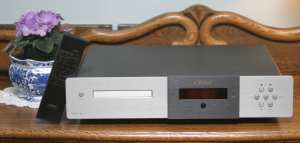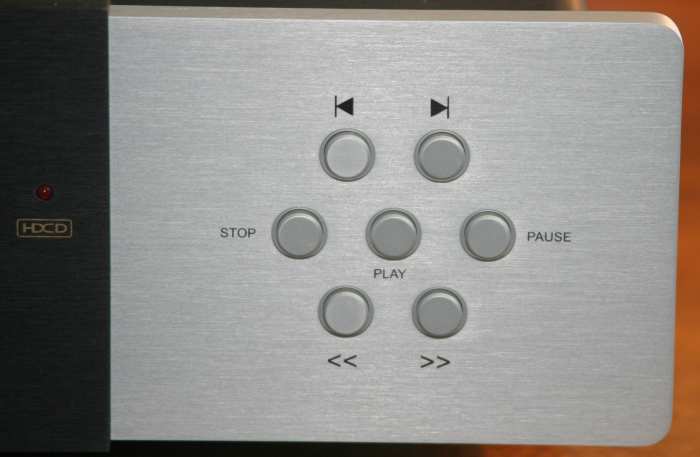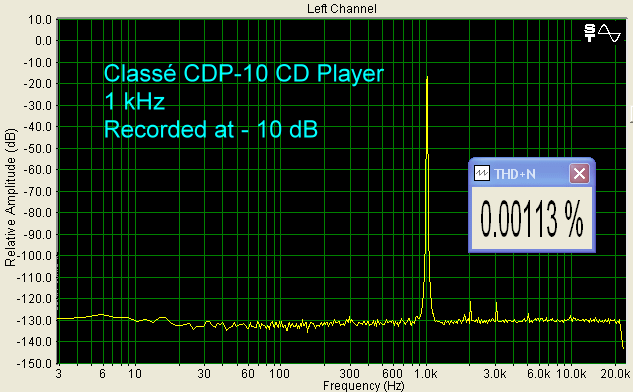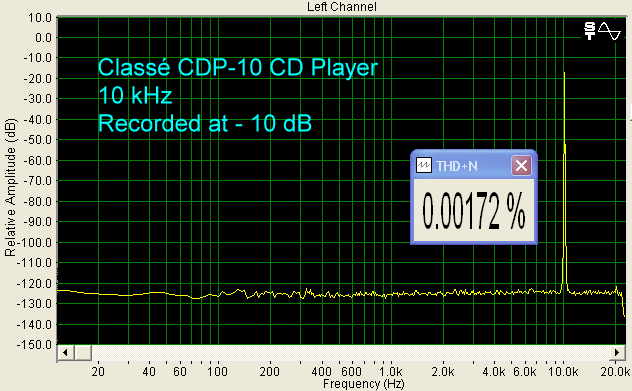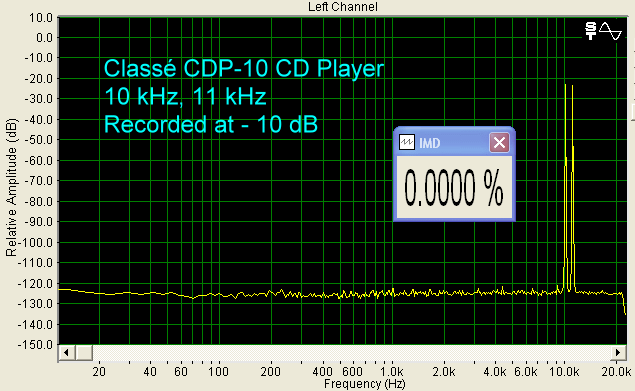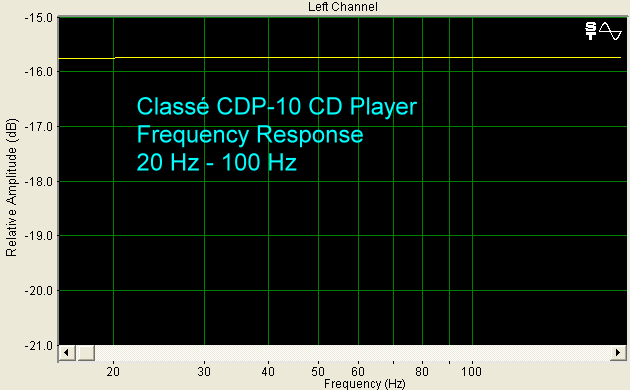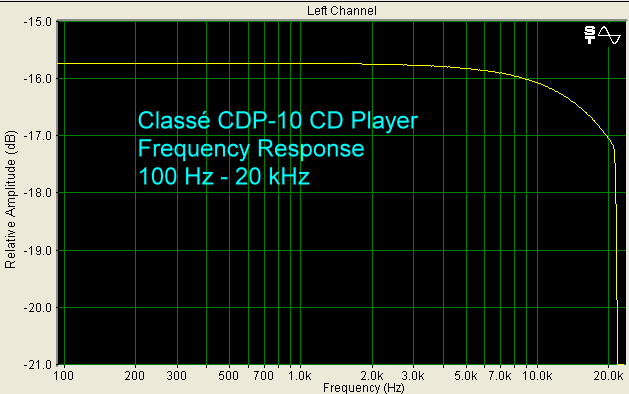|
|||||||||||
|
Introduction Classé Audio is a Canadian company that makes only a handful of products, all of them high-end. They don't sell entry-level components, unless you want to enter at high-performance. And that is not a bad idea, because, although they are non-compromise quality, they are not the most expensive products out there. For example, the CDP-10 CD Player reviewed here, is beautifully constructed and has fully differential DACs (one for the + and one for the - on each channel), which delivers true balanced analog output, but is only $1,999. Why no DVD-A or SACD? In a world moving (slowly) towards CD, DVD-A, and SACD universal players, why build a player that only handles CDs? Several reasons. One is that not everyone is interested in DVD-A and SACD. CD is still a very good format, and 99.999% of the music out there is on CD. I read a recent survey that reported almost half of the people surveyed said they were not going to buy DVD-A or SACD players. A second, and perhaps more important reason, is that a multi-player needs additional circuitry to handle various formats, and those additional circuits make noise even when they are not actively decoding one of the several formats. So, taking all of these concepts into account, there is still a market for dedicated CD players, including high-end ones like the CDP-10. Construction The build quality of the CDP-10 is superb. The front panel fascia plate is thick brushed aluminum, the LED readout is clear and legible, and the buttons are simple. The rear panel has a main power toggle, and the front panel has a standby button, which keeps the unit warm with trickle current when it is not being used.
There are trigger sockets for communication with other components (so you can turn everything on with one component), and the AC cord is grounded and detachable. The CDP-10 transport mechanism is one of the smoothest I have ever experienced. That does not make it any faster or easier to load or unload discs, but the smoothness of the tray handling implies that the disc is handled more solid during playback as well. The DACs Not only are Burr-Brown 24/192 DACs used in the CDP-10, but a pair of them (two stereo DACs). One is used for the positive leg and another for the negative leg of each channel. This keeps the signal away from the ground plane and provides for true balanced (XLR) output. The balanced output also gives you more voltage (6 dB) along with common mode rejection of noise that gets into the signal path along the way. Since my two-channel audio system includes a fully balanced preamplifier (BAT VK-5i) and power amplifier (BAT VK-75SE), I really looked forward to having a fully balanced source to go with them. As you will see below, I wasn't disappointed. You can use the CDP-10 as a transport, with the included coaxial digital output jack if you like, but I found the audio section of the unit to be so good, I would consider it a waste to bypass the analog outputs in favor of a different DAC.
The Remote Control unit is brushed aluminum, and appears to have been routed from a solid block of metal. You need a hex wrench to open the back and put in the batteries. It is simple and elegant.
The Sound Besides the BAT units I mentioned above, I tested the CDP-10 with Magneplanar MG1.6/QR speakers, along with Nordost and BetterCables interconnects, and Analysis Plus speaker cables. What surprised me most, was that the CDP-10 had more detail than even SACDs played on a mass market unit. I had really expected to find that SACD would sound better than CD, regardless of the players. But no, the CDP-10 had more substance. The leading edge of sounds was significantly clearer with the CDP-10. And, even though the CDP-10 had more detail, the mass market SACD player had more harshness. We are talking about two different things here though, and it is probable that the quality of the support circuitry, including op-amps at the output stage, are responsible for the sound differences. With full orchestra, I could delineate all instruments - i.e., no mushiness in the midrange - and this suggested to me a low THD and IMD. Check out the bench test results on this issue below. All analog circuits of the CDP-10 are run in pure Class A bias. This can only be done when a component has a large power supply, which the CDP-10 does have. It made the CDP-10 warm during use, and my cat wanted to plop himself down right on top of it. It is difficult to put into words exactly what Class A does to the sound quality, but to me, I get a sense of greater smoothness and speed (better attack on the leading edges of sounds). The CDP-10 was also very, very quiet, which is probably due to the extremely high quality power supply, with its multiple stages. The balanced output, with its 6 dB additional signal, meant I did not have to turn up the volume control on the preamp as much, and this gave me even more of a low noise background. If you have read my previous reviews, you know I like chamber music, which tends to be very easy to listen to, but that does not mean it isn't as demanding as rock or popular music. In fact, the leading edges of piano and violin are very difficult to reproduce. While listening to some Chopin, my wife commented on the clarity of the CDP-10 and how the piano sounded like it was actually in the room. She likes the convenience of a carousel CD player, even though they are mostly mass market products, without the finesse of high-end players, and when she requested that our CDs for the evening be put into the CDP-10 instead, even though it meant getting up to change each disc, I knew we had a great player here. This is the first time she has ever moved away from the carousel player preference. On the Bench With a 1 kHz input signal from a test CD, THD was very, very low, at 0.00113%. All bench tests were performed using the balanced XLR outputs.
At 10 kHz, THD was also very low. Notice also the noise floor. Compare that with other CD players we have tested in the past, and you can see what fully balanced delivers. The lack of any AC ripple in the 60 Hz region points out the value of a top notch power supply. This is the kind of thing you are paying for in a high-performance component.
The IMD test, using a 10 kHz and 11 kHz input signal produced IMD so low, it was beyond our test equipment's ability to detect it.
The frequency response is the only area I would like to have seen better performance, as it begins rolling off at about 2 kHz to be 1.3 dB down at 20 kHz. This translates to 20 Hz - 20 kHz ± 0.65 dB. However, I want to point out that there are many reasons for resulting non-flat frequency responses, including not using a lot of negative feedback. My $4,500 preamplifier, which uses no global negative feedback, is not very flat either, but, oh what a sound!
Conclusions CD is alive and well, and the Classé CDP-10 sounds as good as any CD player I have ever heard. It is beautiful to look at, and is priced reasonably. The CDP-10 is definitely a short list inclusion for anyone shopping in the realm of dedicated CD components.
|
|||||||||||

